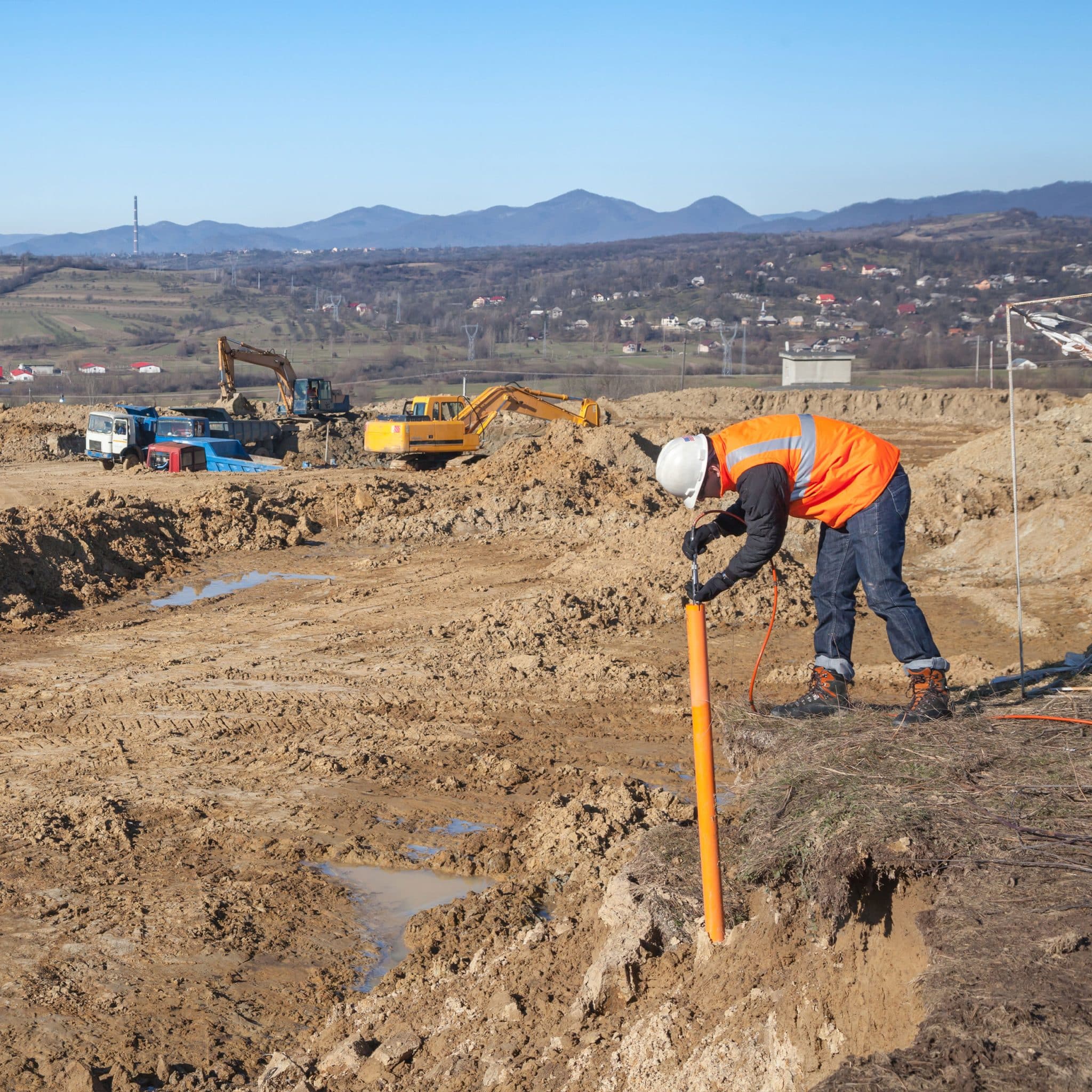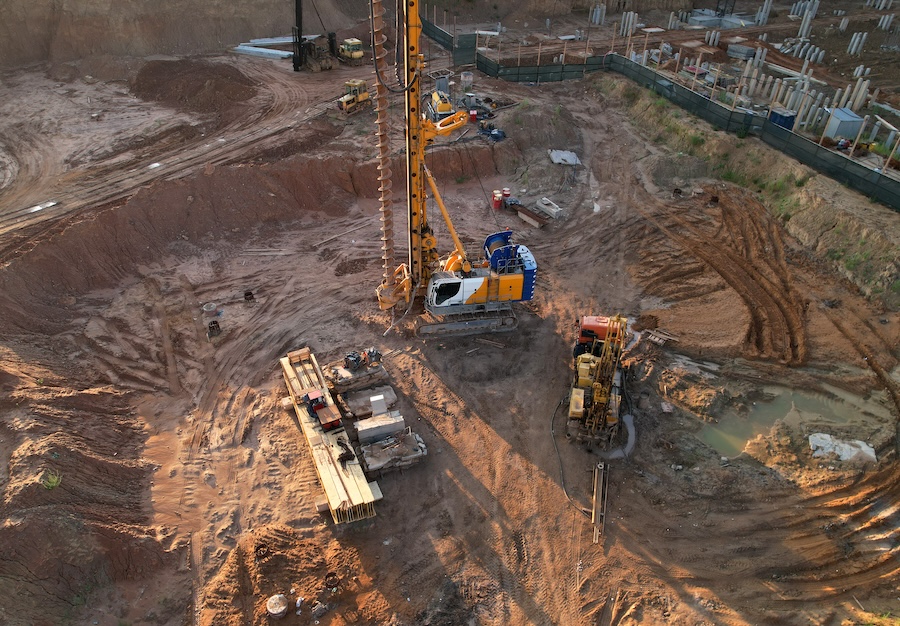Picking the Right Geotechnical Engineers for Your Next Large-Scale Job
Exploring the Innovative Methods and Technologies Shaping the Future of the Geotechnical Sector for Sustainable Engineering Solutions
The geotechnical market is going through a transformative shift, driven by cutting-edge strategies and innovations that stress sustainable design solutions. Advanced dirt stabilization approaches, the usage of wise materials, and the application of data analytics are redefining just how we come close to facilities obstacles.
Advanced Soil Stabilization Methods
Soil stabilization is a critical procedure in geotechnical engineering, focused on enhancing the physical residential properties of soil to boost its load-bearing capability and sturdiness. Advanced soil stabilization methods play a crucial function in addressing challenges related to weak or unpredictable dirts, therefore enabling risk-free and effective construction methods.
Amongst the popular methods, chemical stablizing involves making use of additives such as lime, concrete, or fly ash, which react with dirt fragments to develop an extra cohesive mass. This technique is specifically efficient in boosting the stamina and wetness resistance of extensive clay soils. Mechanical stablizing, on the other hand, involves the physical alteration of dirt buildings with compaction or the unification of granular products, bring about enhanced thickness and security.
An additional cutting-edge strategy is using geosynthetics, which supply reinforcement and minimize soil disintegration while boosting water drainage. Techniques like dirt blending and deep soil stablizing are likewise obtaining grip, allowing for in-situ therapy of troublesome soils. Jointly, these sophisticated techniques not just boost the performance of dirt frameworks but likewise add to sustainable design practices by minimizing the need for comprehensive excavation and product transport.
Smart Materials in Geotechnics
Technology goes to the forefront of geotechnical engineering, particularly with the consolidation of smart materials that enhance the efficiency and functionality of soil structures. Smart materials, such as shape memory alloys, piezoelectric products, and self-healing polymers, are transforming the way designers come close to dirt stabilization and infrastructure longevity (tailings engineer). These products can adjust to altering ecological conditions, reply to stress and anxiety, and also repair themselves, dramatically boosting the strength of geotechnical systems
For circumstances, piezoelectric materials can generate electric costs in reaction to mechanical stress, offering prospective for real-time monitoring of soil problems and structural honesty. Self-healing products can autonomously fix splits and damages, lowering upkeep costs and prolonging the life-span of geotechnical assets. The combination of these wise materials not just boosts the mechanical properties of dirt but likewise adds to lasting design practices by decreasing source intake and ecological influence.
As the geotechnical sector continues to progress, the adoption of smart products will certainly play an important duty in creating innovative solutions, ensuring that frameworks are not only durable but also adaptable to future obstacles. This transformative technique is poised to redefine the standards of safety and security and performance in geotechnical engineering.
Information Analytics for Infrastructure
The integration of clever products in geotechnical design has actually paved the way for sophisticated techniques, particularly in the realm of information analytics for framework. This ingenious technique leverages substantial data collection and analytical strategies to improve decision-making procedures throughout the facilities lifecycle. By using sensing units installed in wise materials, designers can continuously keep an eye on vital specifications such as dirt security, moisture levels, and architectural honesty.
Information analytics makes it possible for the transformation of raw data into workable understandings, permitting predictive upkeep and enhanced danger management. Advanced algorithms and equipment understanding techniques assist in the recognition of patterns and abnormalities, which can educate timely interventions and enhance source allotment. Additionally, integrating geographical information systems (GIS) boosts spatial analysis, more enhancing the decision-making framework.
As facilities jobs expand in intricacy, the dependence on information analytics comes to be increasingly necessary. It cultivates a proactive method, lessening the possibility of failings and guaranteeing the long life and sustainability of structures. By harnessing the power of data analytics, the geotechnical sector is placed to not only boost present methods but also leader innovative solutions for future facilities obstacles. This synergy of innovation and design concepts will certainly define the future of sustainable facilities development.

Sustainable Ground Renovation Approaches
Various sustainable ground renovation approaches are emerging as essential options to see this here deal with the challenges of geotechnical engineering while decreasing environmental impact. These methods not only improve dirt efficiency however likewise advertise environmental stewardship by lowering reliance on conventional, a lot more intrusive methods.

One more cutting-edge technique is the application of geosynthetics, that includes anonymous eco-friendly materials that strengthen dirt while promoting drain and erosion control - engineer of record. This minimizes the need for hefty equipment and decreases site disturbance, thus protecting neighborhood communities
Furthermore, techniques such as vibrant compaction and vibro-replacement have advanced to include sustainable practices, lowering and including recycled materials carbon impacts. These techniques exemplify the industry's shift towards even more ecologically liable options, making sure that ground renovation not just meets design demands however likewise adds positively to the surrounding atmosphere.
Innovations in Environmental Tracking
Recently, developments in ecological tracking have dramatically enhanced the capability to evaluate and handle geotechnical projects with minimal ecological interruption. Innovative modern technologies, such as remote picking up, Internet of Points (IoT) gadgets, and real-time data analytics, are transforming exactly how ecological effects are gauged and minimized.
Remote sensing modern technologies, including satellite images and air-borne LiDAR, promote the quick evaluation of land usage changes and environmental conditions - geotechnical engineers. These devices enable for constant tracking of websites, making it possible for engineers to identify prospective concerns prior to they escalate. Additionally, IoT gadgets, furnished Read More Here with sensing units for criteria like dirt gas, temperature, and moisture emissions, provide real-time information streams that boost the understanding of site-specific environmental variables
Real-time information analytics additionally refine decision-making procedures by incorporating data from different sources, permitting proactive monitoring methods. This holistic strategy not just ensures compliance with ecological guidelines but likewise advertises sustainable techniques within the geotechnical market.
As these technologies continue to develop, they hold the possible to connect the gap between engineering purposes and environmental stewardship, promoting an extra sustainable future for geotechnical jobs worldwide.
Final Thought
Advanced dirt stabilization approaches, the assimilation of smart materials, and the application of information analytics collectively improve the durability and effectiveness of framework. These advancements not only address modern design obstacles but also pave the means for a more sustainable future in geotechnical techniques.
Strategies like dirt blending and deep dirt stablizing are likewise gaining grip, enabling for in-situ treatment of problematic dirts. Collectively, these innovative techniques not only boost the efficiency of soil frameworks however likewise contribute to lasting design techniques by reducing the demand for substantial excavation and product transportation.
